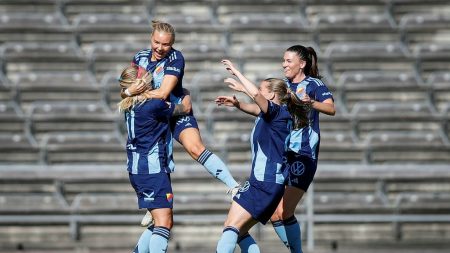The French alpine skier, Cyprien Sarrazin, suffered a severe crash during a downhill training run on the Stelvio course in Bormio, Italy, a notoriously challenging and dangerous slope. The incident occurred on a jump in the lower section of the course where Sarrazin, who had posted the fastest time in the preceding Thursday’s training session, lost control mid-air. He landed heavily on his back before sliding at high speed into the safety netting, where he remained motionless. Medical personnel attended to him on the scene for an extended period before he was airlifted to hospital by helicopter.
While the full extent of Sarrazin’s injuries remained unknown immediately following the crash, the French Ski Federation confirmed to Eurosport that he was conscious. Despite this reassuring news, the incident has ignited a wave of criticism directed at the race organizers regarding the course conditions. Sarrazin’s teammate, Nils Allegre, voiced his concerns to Eurosport, alleging poor course preparation and a lack of respect for the skiers’ safety, calling for a reduction in the course speed. He expressed grave reservations about the suitability of the Stelvio slope for the upcoming 2026 Winter Olympics, slated to be held in the region.
Allegre’s criticisms were echoed by Swiss skiing star Marco Odermatt, who described his own run down the Stelvio as a ”fight for survival.” Speaking to Blick, Odermatt highlighted the treacherous section where Sarrazin crashed, noting a change in snow consistency that demanded extreme focus and left little margin for error. However, he was careful to emphasize his belief that Sarrazin had not been taking excessive risks. Odermatt’s account underscores the challenging nature of the Stelvio course, which has a history of demanding performances and pushing skiers to their limits.
The training session was halted for 20 minutes following Sarrazin’s crash, underscoring the severity of the incident and allowing medical personnel to attend to the injured skier. Felix Monsén was the sole Swedish competitor participating in the training run. The incident casts a shadow over the upcoming race and raises crucial questions about the safety standards and course preparation on the Stelvio, particularly in light of the upcoming Winter Olympics.
Sarrazin’s crash serves as a stark reminder of the inherent risks involved in downhill skiing, especially on challenging courses like the Stelvio. The incident has sparked a debate about the responsibility of race organizers to ensure the safety of the athletes while maintaining the integrity and competitive nature of the sport. The call for a review of course conditions and speed limits underlines the delicate balance between pushing the boundaries of athletic performance and safeguarding the well-being of the competitors.
The aftermath of the crash will likely involve a thorough investigation into the circumstances surrounding the incident, including an assessment of course preparation and safety measures. The opinions expressed by seasoned skiers like Allegre and Odermatt, both of whom have intimate knowledge of the demands of downhill racing, lend weight to the concerns about the Stelvio’s suitability for high-speed competition. The incident highlights the ongoing dialogue within the sport about risk management and the need for constant vigilance to minimize the potential for serious accidents.














